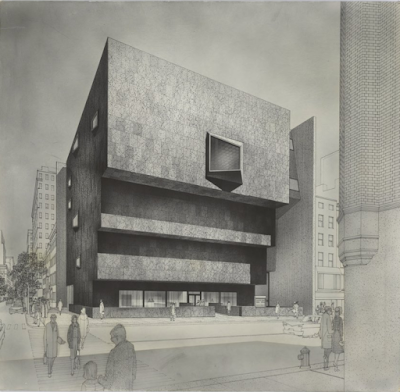Monuments of architecture and creators of the transcendence: Marcel Breuer (part 4)
(Images from nyurbanism
com)
“I am as much interested in the smallest detail as in the whole structure.”
Marcel Breuer continues on with his desire to meld concrete, forming its mainstay perspectives towards his architectural forte. Large grandiose, concrete encasements, that instilled his take on Brutalism. Pure and richly detailed into its formation of starkness to which he mastered. In 1962 he completed the IBM Research Center in La Gaude, France, followed by in 1966, the Whitney Museum of American Art. Which was probably the most iconic building he finished in his later years as an architect. An inversed mass within its bulwark proportions, set against the tumultuous era of the 1960s. To me, Whitney Museum of American Art, like St Johns cathedral, evokes a ceremonial bunker or as referred by Breuer's own description an “...inverted Babylonian ziggurat”.
He built, rather than a hidden reinforcement of of a building, an external supportive structure which revealed itself as a beacon of stability. It therefore visually holds the eternal and now we can refer to what was discussed earlier in this story of Breuer, that is, a structure that outlasts man, the biology - it transcends time. Becomes time, conquers time. And this alone is what makes a building great, conceptually drawn from the creator, the designer. To focus, like the earlier designers of the great monuments in history and it is we, the human, that then becomes a god. These are the foundations to create our thrones or Pandæmonium, as quoted in part 1 of Monuments of architecture and creators of the transcendence, from the John Milton poem in reference to Shakespeare.
Maybe it is better to “reign than serve...”
Marcel Breuer passed away in 1981







Comments
Post a Comment